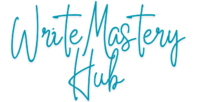Hello fellow writers, freelancers and strugglers! Have you ever come across the question of what is the difference between blog post and article?
Yes… when i started my career as a freelance writer back in 2019 I knew nothing about it.
And yes Initially it causes many problems for me…
With so many blogs, websites, and social media platforms out there, it can be tough to get your voice heard.
But here’s the thing: it’s not just about getting your voice out there – it’s about getting noticed, getting your work seen, and getting it remembered.
That is where the difference between the blog post and article emerges to challenge the results of the efforts to popularize the proper understanding of the term, and to rule out its misinterpretation.
This is the case because there is a lot of confusion from many writers who are not clear on what distinguishes a blog post from an article.
I mean, think about it. You are at your desk and you are in front of a computer, writer’s block has just hit you and you are wondering what to post. How do you write a blog post or an article? Besides, what is the difference between blog post and article?, let me ask you that?
As any writer can attest, feeling frustrated and unsure of how to start creating content that is interesting to your readers is normal.
And yes, you’re not alone. I’ve been there too. So, the good news is that the clear distinction between blogging and article writing can astound you.
So, what is the Difference between blog post and article.
Okay then, let’s go and see how the two classifications of content differ from each other.
By the end of this piece, you will have realised what you need to create and when, and you will be able to create content that really matters to your consumers.
Here are some of the key differences i will point out to you guys before going forward in Detail…
- Purpose: Blog post is to provide interest and enlightenment while an article is a medium for conveying knowledge and a call to action.
- Tone: Blog posts are friendly and casual and sometimes have the tone of a friendly conversation, whereas articles are written in a professional outlook.
- Length: Posts are usually less formal and less lengthy than articles, and bear specific purposes that they are intended to serve.
What Does This Mean for You?
Thus, it might be interesting to ask what all this has to do with you as a writer? So this is very much telling you that you have to distinguish between the compositions known to the world as blogs and articles, and the kind of content that will work for your readers.
It’s not a matter of scribbling some words on a piece of paper and crossing your fingers for the best. It’s all about generating content for your audience and offering a solution to their problems.
Lets Begin…
Definition of blog Writing
A blog post, in simple words, is akin to a conversation. It is personal, casual, and you feel you are speaking directly to the reader. Imagine writing if an article is like a formal letter, a blog post would be a friendly chat over a cup of coffee instead.
Definition of Article Writing
so how do we understand what an article is? A post can be considered very much akin to a friendly chat. Meanwhile, an article is more like a researched essay: a formal, structured piece of writing that gets straight down to facts and figures.
And whereas posts tend to have less of an authoritative tone, articles are normally written from a place of authority, with the tone equally businesslike. Article Writing is To educate and inform the reader, ideally in detail and length.
You Want to learn more about the difference between blog posts and articles? Stay tuned for the next section of this article, where we’ll dive deeper into the world of blog posts and articles, and explore the benefits and drawbacks of each.
what is the difference between blog post and article?

Well then, what is the difference between a blog post and an article? Still, despite the fact that both forms are employed as means to convey a message, there are certain differences between informative and instructive content.
Key Differences
Here are the key differences between blog posts and articles:
1#Purpose
Blog posts are meant to attract the attention of the reader, share information and even prick their curiosity while article is to educate and Persuade the Audience.
In a blog, a blogger is likely to share personal experience, make a point of view, or pass on knowledge, thus making blog posts more personal content, sharing instruments compared to articles that would focus on providing specific information and views on a given subject.
2#Tone
It is worth to mention that blogs are more easygoing and informal, while articles are written in strict and formal style.
As it could be understood, the posts of blogs contain some personal stories; they are funny; on the other hand, articles contain a more serious informative tone.
3#Length
In this case, the target materials are posts and these are normally shorter than articles and developed with the view of being easily consumed.
Blog posts can be less than 500 words while articles can be more than 5000 words long.
Understanding the Differences
Knowing these differences is essential if you want to develop content your target audience will engage with.
Therefore by understanding the needs of your audience, the intended purpose, tone and length of the content it is easier to find solutions to achieving the intended goals.
Why is it Important to Understand the Differences?
because it helps to know how articles are different from blog posts and then you will be able to know how to write the material that your target audience needs to read.
By being on the lookout for the purpose, tone, and length of a certain content, then it will be easier to come up with content that is not only interesting but also informative and persuasive.
How to Apply the Differences
So how can you use those differences to your particular content creation process?
Here are a few tips:
No 1# Know your audience
Writing content requires understanding who your reader is and what he needs from the piece of content that is about to read.
No 2# Choose the right format
Select the format that works well with your content and target group.
No 3# Use the right tone
By doing so, you can write the message in tone that corresponds to the format and the readership.
No 4# Keep it concise
Make sure your text is clear and simple to understand Avoid extensive detailed explanations.
If you adhere to these rules, it is possible to publish pieces that will find a stream of interested readers and meet your objectives.
Advantages and Disadvantages of a blog post and article
Let’s discuss the advantages and the disadvantages of each of the concepts.
Blog Posts
Advantages
In this case, blog posts have the following advantages that would make it easier for any writer to choose this format.
Here are a few:
1: Easy to write
It is generally easier to write a blog posts than to write articles.
because the latter are usually quite formal and may necessitate a certain amount of research.
2: Conversational tone
Since the blog posts are going to be an informal form of writing, they are easier to read and act on by the reader.
3: Can be short and sweet
Articles are typically longer than blogs.
although blogs can be more informative and can easily be forwarded to friends or shared on social media.
disadvantages
However, blog posts also have some disadvantages.
Here are a few:
1: May not be taken seriously
Blog posts cannot be as credible as articles, as blog posts are generally regarded more lightly and formally.
2: Can be too casual
Blog posts can be informal in writing style and as such the information contained in them seems to lack credibility or professionalism.
Articles
advantages
Articles have the following advantages that makes them preferable for many writers.
Here are a few:
1: Can be more in-depth
Articles are more detailed than blog posts and therefore can be informative and contain more information as compared to blog posts.
2: Formal tone
Articles can be written in simple language but in a formal way which makes the reader feel that the contents are more believable.
3: Can establish authority and credibility
There are particular advantages of using articles to introduce the topic and the author as an expert, using which the author can build trust among the readers.
disadvantage
However, there are some disadvantages with the use of the articles.
Here are a few:
1: Can be time-consuming to write
It may take longer time to develop articles when compared to blog posts because they contain more info under a different level of authority.
2: May be too formal
In articles there is a tendency to over use of formal language that makes the article look less friendly to the readers.
How to Choose the Right Type of Content for Your Goals
Having looked at the advantages and disadvantages regarding blog posts and articles.
now, it is time to discuss how to select the most appropriate type of content for achieving the intended objectives.
here is the Solution
Make the right content type decision depending on the results you want to achieve.
It’s as simple as that.
But the question arises that how one can come to know that which type of content they should develop.
Well, that is already where the following tips come in.
Tips
Here are some tips to help you choose the right type of content for your goals:
1: Know your audience
Know your viewers and their Requirements from your post. Are they in a hurry, do they want general as well as specific information about this particular topic?
2: Use a conversational tone for blog posts
As everyone uses it in everyday communication, blog posts are excellent for creating a context and engaging in a conversation with the audience. In his language, try to be informal and conversational so the readers feel like you’re suggesting something to a friend.
3: Use a formal tone for articles
Articles are ideal in making the author establish authority and prove their credibility basing on a given topic.
Try to avoid familiar language to ensure the readers understand that you know what you’re doing.
4: Keep blog posts short and sweet
Blog posts need to be concise. These should be short and simple, and must be Search Engine friendly.
5: Use articles to establish authority
Accuracy is perfect for creating authority and credibility in a certain line of news.
Utilize them to demonstrate to your readers that you are knowledgeable in your line of work, use them to let your brand stand out as a pioneer in the industry.
How to Apply These Tips:
As such, how can you translate these tips to your content marketing plan?
Here are a few steps to follow:
step 1: Identify your goals
Where are you in your content development process? What is your goal with your content?
Do you want to create associations with your company, become known as a pioneer or industry authority, or perhaps you want people to go to your site?
step 2: Know your audience
Who is your audience? What current and future needs do they have? What are their pain-points?
How can they be attracted to the kind of content that they want you to feed them with?
step 3: Choose the right type of content
Choose the type of content by your goal and your audience.
The blog posts are useful for branding and for having a ‘chat’ with potential customers, while the articles are good for positioning yourself as an expert and a provider.
step 4: Create high-quality content
No matter the kind of content you go for choose ensure it is quality and compel.
Write in an informal way in the blog post and formally when writing an article.
step 5: Optimize for SEO
Ensure that you search engine optimize all your content irrespective of the kind of content you are trying to post.
Optimize for the terms and expressions your audience is likely to use when searching for your content; simplify your writing and design.
By following these steps and tricks it will be easier to develop a content marketing plan that is successful in getting the right message to your target Audience.
Essential Strategies to Ensure Successful Blog Posts
We have discussed the advantages, disadvantages and learnt about choosing the right type of content to achieve the goals for writing of blog posts or articles.
now, it’s time to reveal some guidelines and tricks to follow in order to write good blog posts.
Solution to the Worries
Follow the above tips and come up with good blog posts that are relevant to your target audience or market, as well as, meeting your set purpose.
Tips
Here are some tips to help you create effective blog posts:
1: Use a catchy headline
Your headline is the first thing anybody will read, so ensure that the headline is somehow creative and engaging.
Employ the use of questions and action verbs to arouse the reader’s curiosity.
2: Keep it concise and easy to read
In its current state, such a blog must offer posts that are laconic and straight to the point.
It should be noted that the text should not be written as particularly lengthy paragraphs, it is also useful to split the text into bullet points.
3: Use bullet points and short paragraphs
Lists and brief sections fit the material, helping readers to quickly and effortlessly go through your information.
Use them to interrupt plain text and thereby make it easier for your readers to come through your content.
4: Optimize for SEO
Make your blog posts as SEO friendly as possible and pick keywords and phrases that audiences are using to find posts.
Keyword research tools can be applied in order to select the most suitable key phrases used in content.
How to Apply These Tips
So how can you use these tips to your blog post?
Here are a few steps to follow:
step 1: Brainstorm a catchy headline
Spend a few minutes developing a headline that will make the reader take an interest in the advertisement.
The use of action verbs and questions will help to grab the reader’s attention.
step 2:Write a concise and easy-to-read post
It’s ideal to maintain small paragraphs with bullet options to separate the text.
Avoid using complicated words or professional terminologies since your audience may not understand them.
step 3:Optimize for SEO
You can use a keyword research tool to identify keywords for your content that will drive a lot of traffic.
You should be able to use some of these keywords in the headline, subheadings as well as within the body of the post in order to enhance its SEO optimization.
step 4:Use bullet points and short paragraphs
You should subhead and also use bullet points and short paragraphs because the human brain finds it easier to read content that has this format.
This will make it easier for the readers to skim over and read your post.
step 5:Edit and proofread
At the end of the post, correct grammatical mistakes and any punctuation or spelling errors to make the text look clean and clear.
This should be done manually by checking the grammar and spelling of the post before posting and letting someone else make a second check over anything you posted.
Let’s edit and proofread your article Using Grammarly.
Remembering these tips and steps will go a long way in making sure that your Blog Posts connect to your audience as well as getting your messages across as planned.
It also Gives you knowledge about the question you are looking for What is the Difference Between Blog Post and Article?
Conclusion to What is the Difference Between Blog Post and Article?
And there you have it!
Learning the distinctions between the two is important in order to come up with the right content and to meet the intended objectives.
In this article we have discussed what distinguishes blog posts from other articles, such as the goal, style, and word count.
We have even examined the pros and cons of each type of content and the tricks one needs to keep in mind when developing that perfect content.
Further, we discussed that the purpose and intention of a blog post are different from that of an article.
- because while the former is mainly informative and seeks to capture the attention of whoever is reading, the latter is informative and persuasive.
- Blog posts contain articles that are relatively shorter and casual while containing articles that are relatively longer and official in nature.
- Understanding the difference between blog posts and articles is crucial for creating effective content.
So, what are you waiting for?
Now is the time to start creating excellent content. If you are writing a blog post or an article, then use the strategies discussed in the present article and get your desired outcomes from your articles.
Most importantly, remember this: most content writing is based on the concept of targeting your audience’s needs and creating the necessary materials.
With the help of the tips and tricks given in this article and founds of it you can craft a message which will be interesting for your audience and which will grant you the wanted results.
Thus, we would like to think that you’ve derived some amount of enjoyment from the material and information presented herein.
Please feel free to ask or comment on anything you wish on this topic. We’d love to hear from you!
Do you want to learn about worthwhile material? You can start scrolling right away – click the link below!
The Ultimate Guide to Article Writing




Pingback: Free Word Count Tool for Writers, Bloggers, and Students - writemasteryhub.com
Pingback: Article Writing for Beginners: From Blank Page to Published Pro - writemasteryhub.com